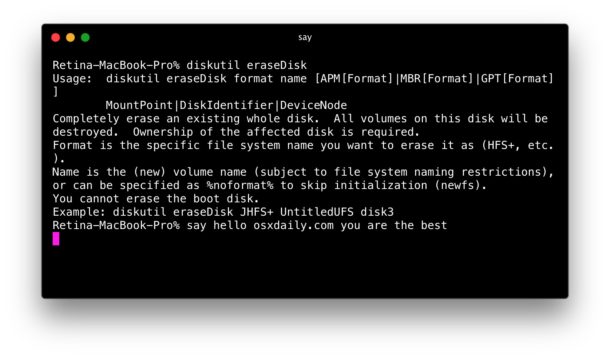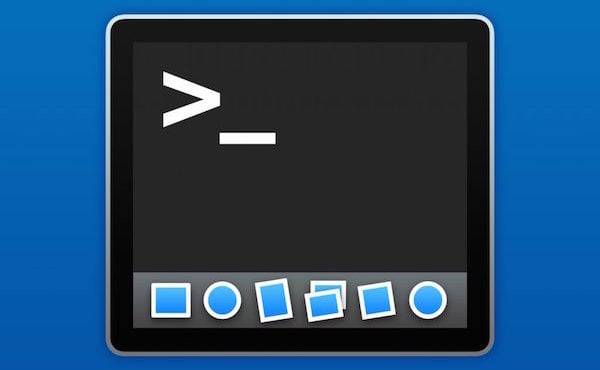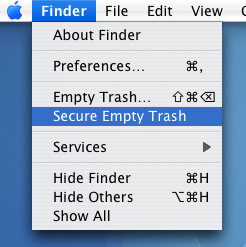
Apple used to have a feature that would allow you to securely. A Side-Note on Securely Emptying Your Mac’s Bin. You can do this by clicking on the magnifying glass in the top right of your toolbar before tying terminal in the search bar and clicking on terminal.app. Open your trash folder by clicking on the Trash icon in your doc. To force-delete a file, open your Mac’s Terminal. Then type in 'ls' (lower case Ls) and press enter again. In Terminal, type in 'cd /.Trash' and press enter. It’s important to keep in mind that if you run the eraseDisk command, the target disk is going to lose all its data, so make sure you are erasing the proper disk. To do this, press command and spacebar simultaneously, then type in 'Terminal'. The syntax is going to look like this: Diskutil eraseDisk JHFS+ Empty /dev/disk5s2 When Apple launched the MacOS Sierra, it has removed the secure remove option, terminal, and the trash can. Drag and then drop the file/s you want to delete.
#Secure delete on mac terminal mac os#
Let’s say the disk I want to erase has “/dev/disk5s2” as its identifier and I’m going to use Mac OS Extended Journaled (JHFS+) as the system format type and name it “Empty”. Type in srm v (add space after the v, srm means ‘secure remove’) 5. Acknowledge that Pulse Secure has been removed. Warning: If your Mac has a T2 security chip, this will likely result in the permanent loss of all files on your Mac as well as the Touch ID data stored in the enclave. From the Terminal, run this command: xartutil -erase-all. Click Yes to remove your Pulse Secure configuration. Once the macOS installer begins, open a Terminal by clicking Utilities > Terminal in the menu bar.
#Secure delete on mac terminal password#
The system may ask you for the administrator password to continue. Open Finder (the smiling icon) Browse to your Applications and select 'Pulse Secure'.

This is the syntax we need: Diskutil eraseDisk FILESYSTEM DISKNAME DISKIDENTIFIER If it is running, right click on the icon and choose quit. Then pick a name and a system format type. Once you have found the proper drive to erase, just copy its identifier so you can use it for the next command. This is going to list all the mounted drives on your Mac.

Start off by running the following command in the command line: Diskutil list

Here I'll show you how you can erase and format a disk using the command line. To do that, the only thing you need is a bit of precise syntax to make sure that you are erasing the proper disk. But some Mac users might need to erase them from the command line on Mac OS. Most users use Disk Utility to erase a disk or hard drive.


 0 kommentar(er)
0 kommentar(er)
